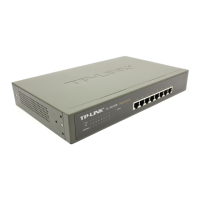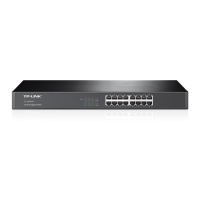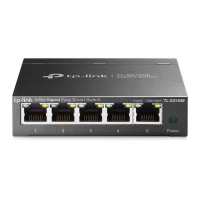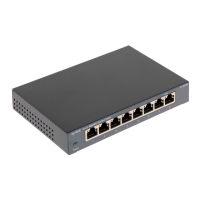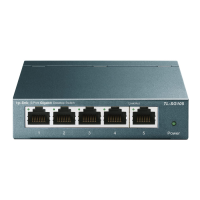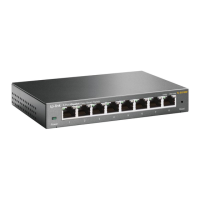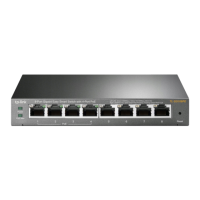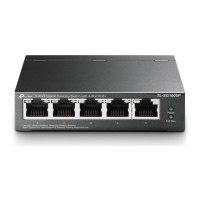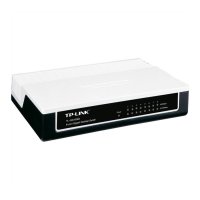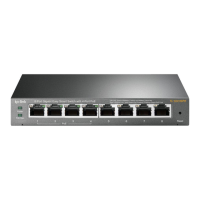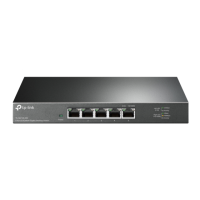Do you have a question about the TP-Link TL-SG1016DE and is the answer not in the manual?
Step-by-step guide for installing the Easy Smart Configuration Utility software.
Details how to configure and view the status of discovered switches.
Configure network parameters like IP Address, Subnet Mask, and Default Gateway.
Modify administrator username and password for secure login.
Save or load switch configurations to/from a file.
Reset all switch settings to their factory default values.
Instructions for updating the switch's firmware for new features and performance.
Configure basic parameters for each port, like speed, duplex, and flow control.
Control ingress/egress traffic rates on each port.
Configure system power limits and port-specific PoE parameters.
Step-by-step guide for installing the Easy Smart Configuration Utility software.
Details how to configure and view the status of discovered switches.
Configure network parameters like IP Address, Subnet Mask, and Default Gateway.
Modify administrator username and password for secure login.
Save or load switch configurations to/from a file.
Reset all switch settings to their factory default values.
Instructions for updating the switch's firmware for new features and performance.
Configure basic parameters for each port, like speed, duplex, and flow control.
Control ingress/egress traffic rates on each port.
Configure system power limits and port-specific PoE parameters.
| Switch type | Managed |
|---|---|
| Switch layer | L2 |
| Quality of Service (QoS) support | Yes |
| Power connector | AC-in jack |
| Installed SFP modules quantity | 0 |
| Basic switching RJ-45 Ethernet ports type | Gigabit Ethernet (10/100/1000) |
| Basic switching RJ-45 Ethernet ports quantity | 16 |
| 10G support | No |
| Number of VLANs | 32 |
| Networking standards | IEEE 802.1p, IEEE 802.1Q, IEEE 802.3, IEEE 802.3ab, IEEE 802.3u, IEEE 802.3x |
| Virtual LAN features | Port-based VLAN, Tagged VLAN |
| Cable types supported | Cat3, Cat5, Cat6 |
| Copper ethernet cabling technology | 100BASE-TX, 100BASE-T, 1000BASE-T |
| Jumbo frames | 9000 |
| Forwarding rate | 23.8 Mpps |
| Number of queues | 4 |
| MAC address table | 8000 entries |
| Packet buffer memory | 0.512 MB |
| Power source | AC |
| AC input voltage | 100 - 240 V |
| AC input frequency | 50/60 Hz |
| Power consumption (max) | 19.15 W |
| Stackable | - |
| Form factor | 1U |
| Product color | Black |
| Housing material | Metal |
| Heat dissipation | 34.52 BTU/h |
| Storage temperature (T-T) | -40 - 70 °C |
| Operating temperature (T-T) | 0 - 40 °C |
| Storage relative humidity (H-H) | 5 - 90 % |
| Operating relative humidity (H-H) | 10 - 90 % |
| Maximum cable length | 100 m |
| Compatible operating systems | Windows |
| Package type | Box |
| Package depth | 400 mm |
| Package width | 250 mm |
| Package height | 80 mm |
| Package weight | 1910 g |
| Sustainability certificates | CE, Federal Communications Commission (FCC), RoHS |
| Depth | 180 mm |
|---|---|
| Width | 284 mm |
| Height | 44 mm |
